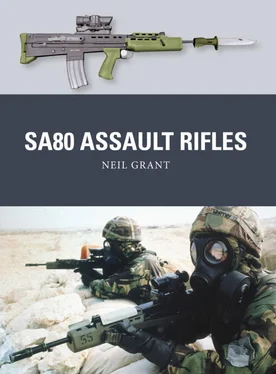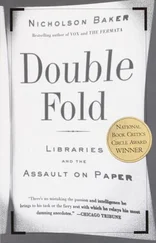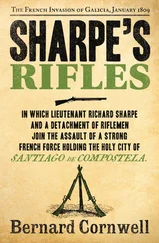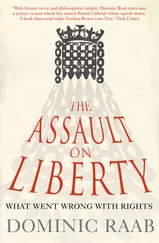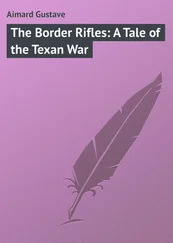First, they were the first major weapons to use the ‘bullpup’ layout, wherein the magazine and action sat behind the trigger, rather than ahead of it. This allowed the weapon to be much shorter overall, while keeping the same barrel length. Secondly, they were designed as ‘in line’ weapons. With a conventional rifle, the line of the barrel was higher than the line of the stock. This allowed the user to look along the barrel to sight the weapon, but also meant that recoil force when a cartridge was fired pushed the weapon both backwards and upwards. An ‘in line’ weapon placed the barrel and top edge of the stock in a straight line, so that the recoil force pushed straight backwards, with minimal muzzle climb. This was an excellent characteristic for an automatic weapon – and later used on the American M16 series, for the same reason – but it meant that the sights had to be raised above the barrel by fitting them atop a carrying handle. This in turn meant that the user exposed more of himself when firing over cover. Thirdly, both weapons were fitted with optical sights as standard, rather than simple ‘iron’ sights.
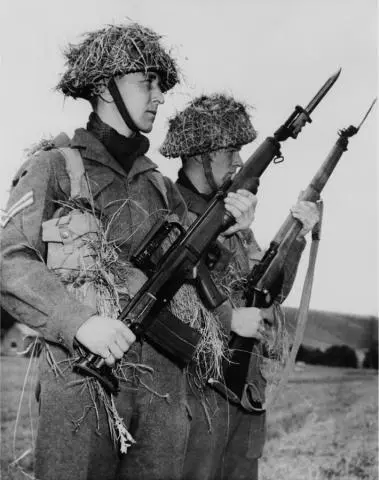
British soldiers armed with the newly issued EM-2 rifle and its predecessor, the Lee-Enfield No. 4, 1951. (Photo by Keystone-France/Gamma-Keystone via Getty Images)
The short-lived EM-1 (‘Experimental Model 1’) used a roller-locked mechanism and was made from metal pressings to save cost. Both were new technologies in the UK at that time, however. The British thus preferred the EM-2, designed around conventional gas operation and made using traditional machining techniques, which were more expensive but better understood. The EM-2 did well in trials in both Britain and the United States in 1948–50; but the US military believed that aimed shots at longer ranges would remain important in future combat, regardless of evidence to the contrary. They therefore felt that the British .280in round was underpowered and preferred their own 7.62×51mm round, which was effectively just a slightly shortened .30-06 cartridge. The British and Canadians (who also favoured the EM-2) sought a compromise solution, producing several EM-2 prototypes chambered for somewhat longer cartridges. The United States remained insistent that their own 7.62×51mm round was the lightest they would accept, however, despite British arguments that rifles chambered for this cartridge would not be controllable on automatic.
The EM-2 was briefly adopted by Britain’s Labour government as the ‘Rifle, Automatic, No. 9 Mk 1’ in 1951, but trouble was looming. One of the key tenets of the 1949 NATO alliance was standardization of equipment, and especially ammunition. The US Ordnance Department made it clear that they would not adopt the .280in round, however; and when Winston Churchill and the Conservative Party returned to power in October 1951, the new British government decided that standardization with the United States was the most important thing, and reversed the previous government’s decision to adopt the EM-2 before it was issued to the troops. Instead, the British adopted a semi-automatic-only version of the Belgian FN FAL rifle in 1954, chambered for the US 7.62×51mm NATO round. This weapon became the L1A1 SLR and served the British Army well for 30 years.
As the British had warned, the 7.62mm rifle adopted by the United States – the M14 – was quickly found to be uncontrollable on automatic, while experience in the jungles of Vietnam demonstrated that a shorter, lighter cartridge would have been preferable after all. In a terrible irony, the United States itself quickly abandoned the powerful cartridge it had effectively forced the British – and the rest of NATO – to adopt, in favour of the M16 rifle and its 5.56×45mm round.
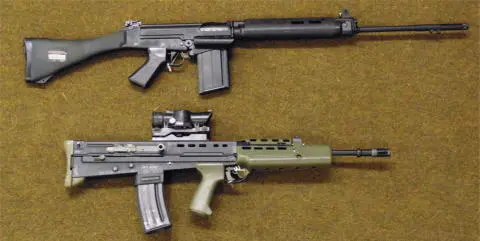
The L1A1 SLR was a reliable weapon respected by its users, but was notably long, as this comparison with an L85A1 IW shows. (Author’s Collection)
PRELIMINARY STUDIES (1969–71)
In one sense, the EM-2 was a dead end. Many of its design concepts reappeared in the late 1960s, however, when the British Army began looking for a possible successor to the SLR. The latter had served well in a number of small ‘end of Empire’ campaigns, and was generally popular among the troops; but it would reach the end of its economic life in the 1980s, by which time any replacement weapon needed to be developed and ready to enter service. Moreover, with the Army focused on armoured warfare in West Germany, the long (114cm) SLR was an awkward weapon for troops expecting to fight from armoured personnel carriers. Meanwhile, the lack of an automatic capability kept the Sterling SMG (a World War II design) in front-line service long after most other armies had given up such weapons. With even the Americans now accepting the logic of the short assault-rifle cartridge and using the 7.62×51mm round only in machine guns, the way forward seemed obvious – the British Army wanted an assault rifle, too.
Previous weapon procurements had generally involved competitive tests to select the best weapon from those available. This time, it seemed taken for granted that the new weapon should be designed in Britain, rather than bought from another country. Despite generally positive experiences with the M16 rifles the British Army had purchased for special applications, there was little systematic attempt to evaluate what was already available on the open market. The Royal Small Arms Factory (RSAF) at Enfield was selected to design the weapon the Army needed, and began preliminary studies for a potential replacement cartridge and rifle in 1969. These studies investigated calibres from 4.5mm to 7.62mm with an effective range of 300m to 600m. Caseless rounds (as later used in the German G11 rifle) and very small-calibre, very high-velocity flechette projectiles were briefly considered, but RSAF Enfield did not believe either could be developed and fielded within the timescale required.
Attention initially centred on a 6.25×43mm round – effectively, a necked-down version of the .280in round of the EM-2. This appeared to give similar penetration to that of the 7.62×51mm NATO round out to 600m, while having a low enough recoil to be controllable during automatic fire. By 1970, the focus had changed to a slightly smaller round (4.85×44mm) created by trimming and necking down standard 5.56×45mm NATO cartridge cases, before finally settling on a slightly longer (4.85×49mm) cartridge for both the IW and LSW. The study identified four possible configurations for the weapons to fire the new cartridge:
(1) Normal configuration (i.e. with magazine and action ahead of the trigger) and SLR-style dropped butt.
(2) Normal configuration and M16 style in-line butt for better control of recoil, at the cost of raising the sight line.
(3) Bullpup configuration (i.e. with magazine and action behind the trigger) and dropped butt.
(4) Bullpup configuration with in-line butt.
A compromise solution – fitting a conventional weapon with a folding stock – was dismissed because of concerns that such a stock would not be rigid enough for accurate shooting. This was a critical decision. Either of the first two options – those featuring a conventional layout – could be achieved by simply re-barrelling an existing design, or at least using it as a starting point, and would thus reduce risk and cost. Perhaps inevitably, given the history, the study opted for a bullpup configuration. This gave the benefit of a more compact weapon; however, since there were no bullpup weapons in service anywhere, it inevitably meant developing a new design from scratch, with obvious increases in development costs and risks.
Читать дальше
